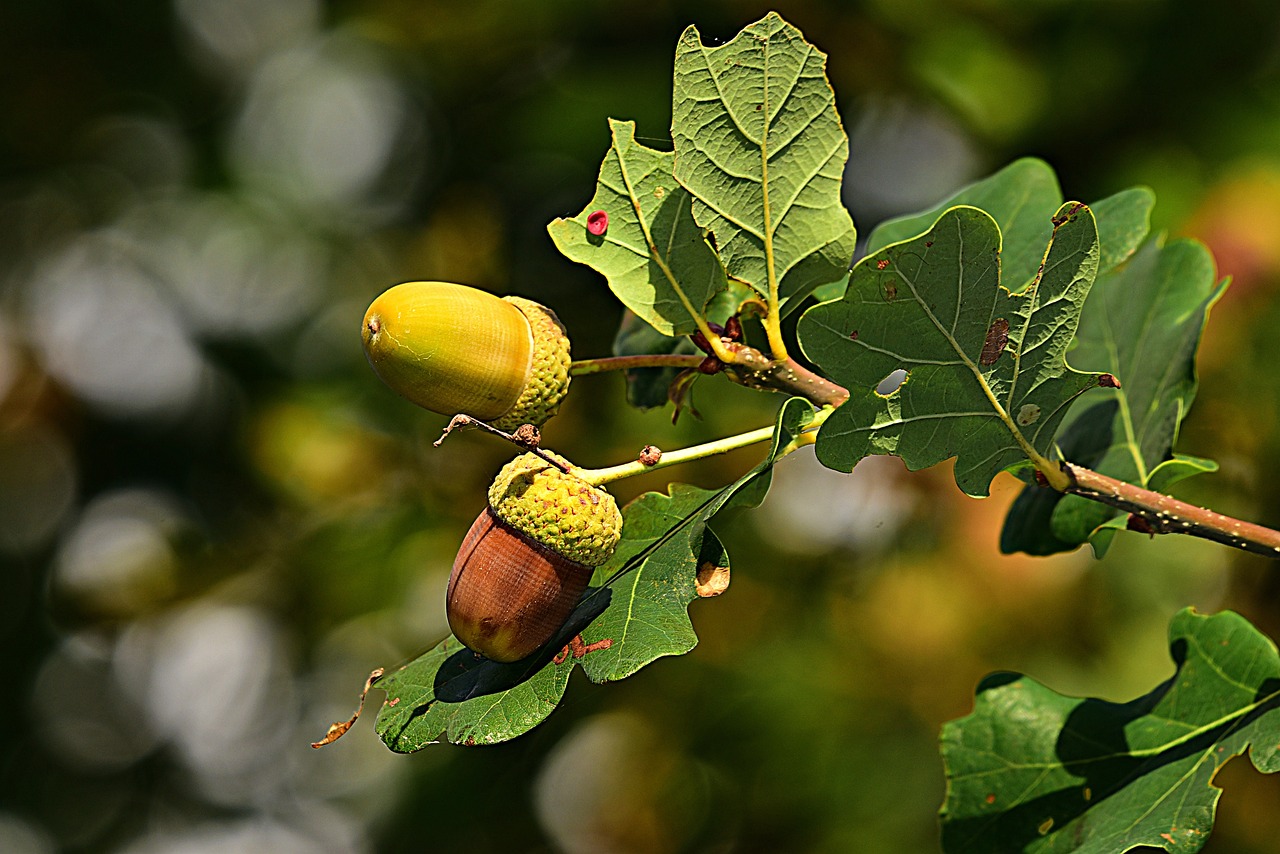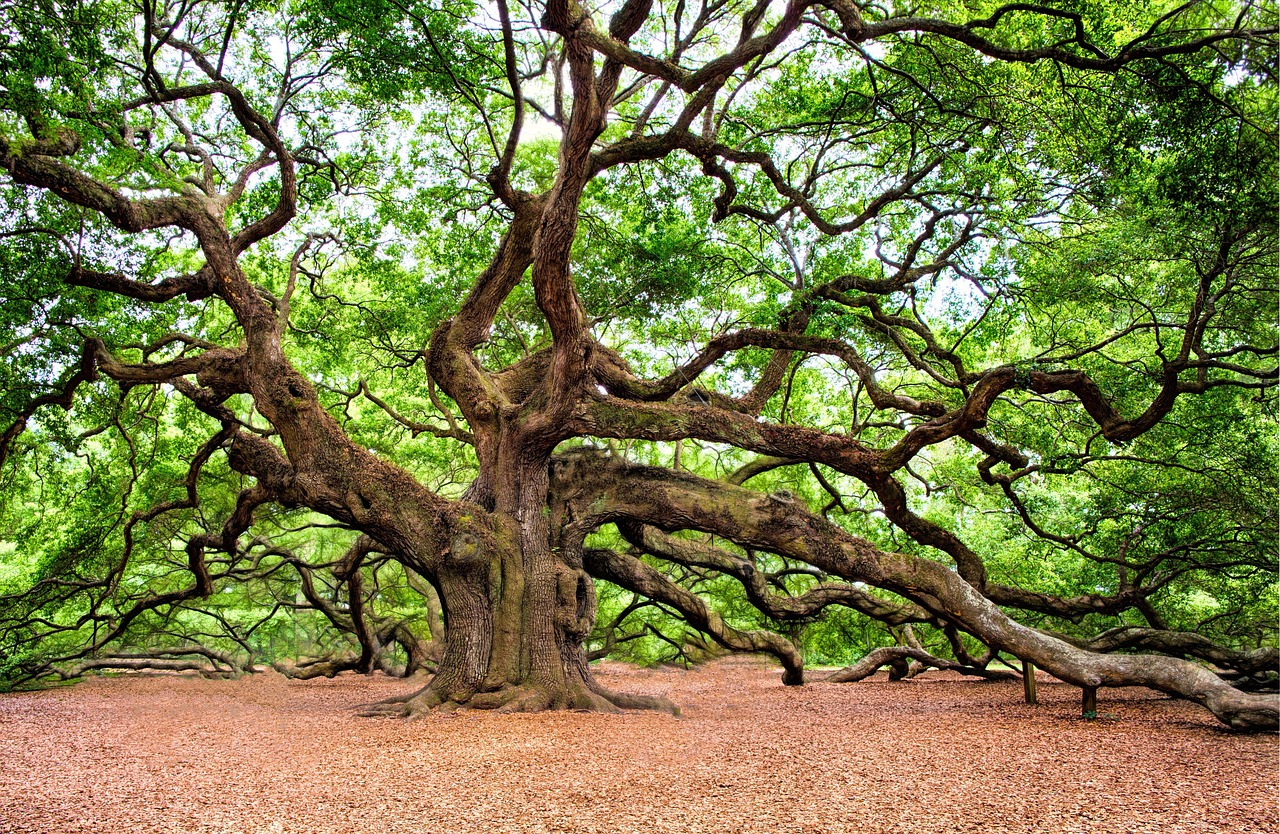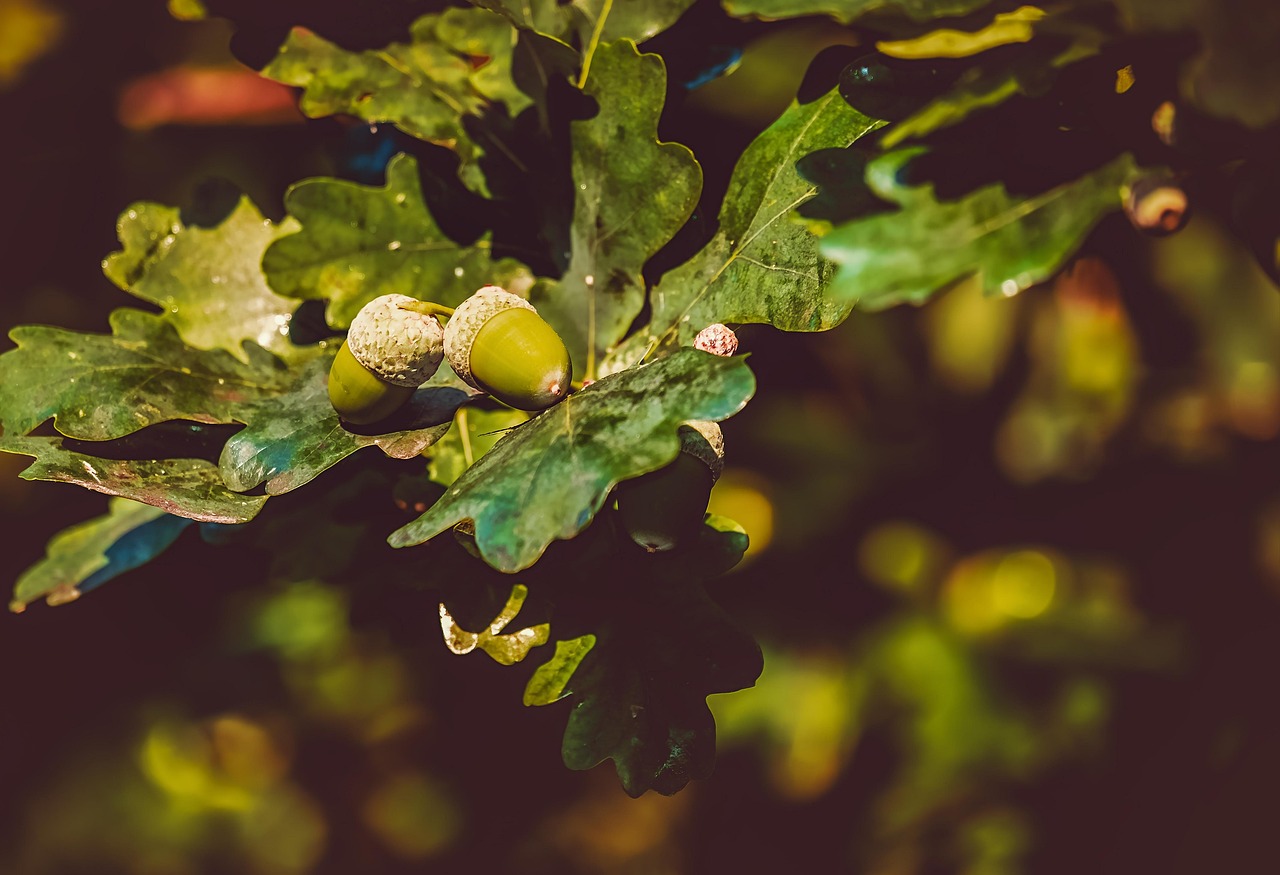Identifying oak tree lookalikes involves examining key characteristics such as leaf shape, bark texture, and acorn features. Common species that resemble oaks include the American hornbeam and the sweetgum. Understanding these similarities can help in accurate identification and appreciation of diverse tree species.
Oak trees belong to the genus Quercus and are native to various regions around the world. They are known for their majestic stature and significant ecological roles. Oaks provide habitats for numerous wildlife species and are an essential component in many forest ecosystems. However, several other trees exhibit similar physical traits, leading to confusion among enthusiasts and casual observers alike.
In order to differentiate oak trees from their lookalikes, it is essential to understand their unique features. This includes details about their leaves, bark, fruits, and overall growth patterns. Each element can provide clues that assist in proper identification. The following table outlines some of the key characteristics of oak trees compared to their lookalikes.
| Characteristic | Oak Trees | Lookalike Species |
|---|---|---|
| Leaf Shape | Lobed or serrated | Often smooth or more broadly lobed |
| Bark Texture | Rough and furrowed | Smoother or with shallow fissures |
| Fruit Type | Acorns | Capsules or drupes |
| Growth Habit | Large and spreading | Varies widely, often smaller |
Common Oak Lookalikes

Several tree species can easily be mistaken for oaks due to their similar foliage and growth habits. Learning to identify these trees can enhance your understanding of local biodiversity. Below are some common lookalikes that you may encounter.
- American Hornbeam (Carpinus caroliniana): This tree has smooth, gray bark and serrated leaves that may resemble oak foliage. Its small size and rounded shape differentiate it from most oaks.
- Sweetgum (Liquidambar styraciflua): Known for its star-shaped leaves, the sweetgum can be confused with certain oak species due to its broad canopy. Its spiky fruit is a notable difference.
- Red Maple (Acer rubrum): With its lobed leaves, the red maple can look similar to some oak varieties. However, its leaf shape is generally more pointed and less deeply lobed.
- Black Walnut (Juglans nigra): This species has compound leaves that can resemble oak leaves at a glance, but its distinctively rounded crown and fruit set it apart.
Understanding these differences can greatly enhance your ability to accurately identify various tree species in your environment. As you continue to explore the world of trees, pay careful attention to these distinguishing features.
Key Identification Features of Oak Lookalikes
When trying to distinguish oak trees from their lookalikes, several key identification features can be useful. These features include leaf structure, bark texture, acorn characteristics, and overall tree shape. By focusing on these aspects, you can improve your tree identification skills significantly.
Leaf Structure
The leaves of oak trees are typically lobed or serrated, providing a distinct appearance. However, many lookalikes have leaves that may appear similar at first glance. Here are some details to consider:
- Oak Leaves: Generally have rounded or pointed lobes. The size and depth of the lobes can vary between species.
- American Hornbeam Leaves: Feature a serrated edge but lack the deep lobes found in oaks. They are smaller and more elliptical.
- Sweetgum Leaves: Have a star shape with five to seven lobes. This shape is quite different from the typical oak leaf structure.
- Red Maple Leaves: While lobed, they are more pointed and have a smoother contour compared to oak leaves.
- Black Walnut Leaves: Compound leaves consist of multiple leaflets arranged along a central stem, differing significantly from the singular leaf structure of oaks.
Bark Texture
Bark is another crucial feature to observe when identifying oak trees and their lookalikes. The texture and color can provide valuable clues. Consider the following:
- Oak Bark: Typically rough and deeply furrowed, with a grayish-brown color that adds to its rugged appearance.
- American Hornbeam Bark: Smooth and gray, resembling muscle tissue, which is quite different from the rough texture of oaks.
- Sweetgum Bark: Characterized by its ridges and shallow fissures, it presents a smoother appearance than oak bark.
- Red Maple Bark: Light gray and smooth when young, becoming shaggy with age, which contrasts with the oak’s roughness.
- Black Walnut Bark: Darker and more deeply furrowed than oak, often with a more irregular pattern.
Acorn Characteristics
Acorns are a defining feature of oak trees. However, many other tree species produce fruits that can be mistaken for them. Understanding the differences between acorns and similar fruits is essential:
- Oak Acorns: Generally have a smooth surface and are enclosed in a cap that sits snugly on top.
- Sweetgum Fruits: Spiky balls that hang from stems, quite unlike the smooth acorns of oaks.
- Black Walnut Fruits: Round and green, encased in a thick husk; they are not similar to acorns at all.
- American Hornbeam Fruits: Small and nut-like but lack the distinctive cap that acorns possess.
Growth Patterns and Shapes
The overall growth habit of a tree can also provide hints for identification. Oak trees tend to grow large and wide, while their lookalikes may display different characteristics:
- Oak Trees: Known for their broad canopy and sturdy trunk, they can reach heights of 60 to 100 feet.
- American Hornbeam: Usually grows as a smaller tree or large shrub, rarely exceeding 30 feet in height.
- Sweetgum Trees: Typically tall and straight with a pyramidal shape, they can grow up to 100 feet.
- Red Maple Trees: Often have a rounded crown and reach heights of 40 to 60 feet, displaying a more compact form compared to oaks.
- Black Walnut Trees: Characterized by their large size and spreading branches, similar in height to oaks but with a different growth form.
By paying attention to these key identification features, you will be better equipped to differentiate between oak trees and their lookalikes. This knowledge will enhance your ability to appreciate the diverse tree species in your environment and contribute to your understanding of forest ecosystems.

Ecological Importance of Oak Trees and Their Lookalikes
Understanding the ecological roles of oak trees and their lookalikes is vital for appreciating their value within forest ecosystems. Oaks are not only significant for their timber and aesthetic value but also serve as crucial habitats for various wildlife species. Their lookalikes, while often overlooked, also contribute to the ecosystem in meaningful ways.
Habitat and Biodiversity
Oak trees are known for supporting a diverse range of organisms. This diversity is influenced by their size, structure, and the resources they provide. Key points include:
- Wildlife Habitat: Oak trees provide nesting sites for birds and shelter for mammals. The acorns produced by oaks are a vital food source for numerous animals, including squirrels, deer, and birds.
- Insect Populations: Oaks attract a variety of insects, which in turn support larger predators. The leaves serve as food for caterpillars and beetles, playing an important role in the food web.
- Fungi and Microorganisms: Oak trees form symbiotic relationships with fungi through their root systems. This interaction enhances soil health and nutrient uptake.
While lookalike species may not offer the same level of support as oak trees, they still play essential roles in their environments.
Role of Lookalikes in Ecosystems
Lookalike species such as the sweetgum or the black walnut contribute to biodiversity. Here are some ways they impact their ecosystems:
- Food Sources: Trees like sweetgum produce seeds and fruits that provide nourishment to birds and small mammals.
- Soil Enrichment: Black walnut trees produce walnuts that release juglone, a substance that can inhibit the growth of some plants but also enriches soil quality for certain species.
- Pollinator Attractants: Many lookalikes produce flowers that attract pollinators, thus supporting the pollination process within the ecosystem.
The Role of Oak Trees in Human Culture

Beyond their ecological importance, oak trees have played a significant role in human culture throughout history. Their strength and durability have made them valuable in various aspects of life.
Cultural Significance
Oaks have been symbols of strength and endurance in many cultures. Some notable points include:
- Historical Landmarks: Many ancient civilizations revered oak trees, often associating them with gods and mythological figures. They were seen as sacred trees representing wisdom and longevity.
- Timber Production: The wood of oak trees is prized for its strength and resistance to decay. It is commonly used in furniture making, flooring, and barrels for aging wines and spirits.
- Landscaping and Aesthetics: Oaks enhance landscapes with their grand stature and beautiful fall foliage. They are often planted in parks and gardens for their shade and visual appeal.
Medicinal Uses
Various parts of oak trees have been utilized for medicinal purposes. Some examples include:
- Bark: The inner bark of oak has been used in traditional medicine for its astringent properties.
- Acorns: In some cultures, acorns were ground into flour or used as food sources, providing sustenance during lean times.
The appreciation for oaks extends beyond their physical presence. Their contributions to culture, history, and ecology make them invaluable assets in our world.
The Importance of Conservation Efforts
As urbanization and environmental changes continue to threaten oak populations and their lookalikes, conservation efforts become increasingly essential. Protecting these trees ensures that their ecological roles continue to benefit future generations.
- Habitat Preservation: Establishing protected areas helps maintain the natural habitats of oak trees and their lookalikes.
- Sustainable Practices: Promoting sustainable forestry practices can help ensure the longevity of these tree species.
- Community Engagement: Educating communities about the importance of oak trees fosters a sense of stewardship toward local ecosystems.
Through these efforts, we can ensure that both oak trees and their lookalikes continue to thrive within our landscapes, supporting biodiversity and enriching our lives.
Challenges Facing Oak Trees and Their Lookalikes

Despite their ecological and cultural significance, oak trees and their lookalikes face numerous challenges in today’s world. Understanding these challenges is crucial for effective conservation efforts and ensuring the survival of these important species.
Environmental Threats
Oak trees and their similar species are increasingly threatened by various environmental factors. Key threats include:
- Climate Change: Altered weather patterns, increased temperatures, and shifting precipitation can impact oak health and growth. These changes may affect their ability to reproduce and thrive.
- Invasive Species: Non-native pests and diseases, such as the oak wilt fungus or the gypsy moth caterpillar, can devastate oak populations, leading to significant declines.
- Urban Development: Expansion of urban areas often leads to habitat destruction. This not only reduces the available space for oak trees but also fragments existing populations, making it difficult for them to thrive.
Human Impact
The impact of human activities extends beyond urban development. Other factors include:
- Deforestation: Unsustainable logging practices can lead to the loss of mature oak forests, affecting biodiversity and disrupting local ecosystems.
- Pollution: Air and soil pollution can affect tree health, leading to weakened trees that are more susceptible to disease and pests.
- Climate Mitigation: Efforts to combat climate change through land use changes can sometimes overlook the ecological value of preserving existing oak forests.
Restoration and Management Strategies
To combat these challenges, various restoration and management strategies can be employed. These strategies aim to enhance the resilience of oak trees and their lookalikes against environmental stressors.
- Reforestation: Planting native oak species in deforested areas can help restore habitats and improve biodiversity. Native species are more likely to support local wildlife.
- Forest Management: Implementing best management practices for forests can aid in maintaining healthy ecosystems. Techniques such as controlled burns can reduce undergrowth and improve habitat quality.
- Pest Control: Monitoring for invasive species and implementing integrated pest management strategies can protect oak trees from harmful pests.
Additionally, community involvement plays a vital role in the success of these strategies. Local organizations can engage the public in tree planting initiatives, educational programs, and conservation efforts, fostering a sense of pride and responsibility towards local environments.
Final Thoughts
The world of oak trees and their lookalikes is rich with diversity and ecological importance. From providing critical habitats for wildlife to serving as symbols of strength in human culture, these trees contribute significantly to our ecosystems. Understanding how to identify them accurately not only enhances our appreciation of nature but also emphasizes the need for conservation efforts.
The challenges that oak trees face today require a collective response from individuals, communities, and policymakers alike. By prioritizing habitat preservation, promoting sustainable practices, and engaging local communities, we can work together to protect these vital species for generations to come.
In conclusion, the knowledge gained about oak trees and their lookalikes is not just an academic exercise; it is an essential step towards fostering a deeper connection with nature. This connection inspires us to take action in preserving the beauty and diversity of our natural world. Each tree tells a story, and by protecting them, we ensure that these stories continue to be told.
